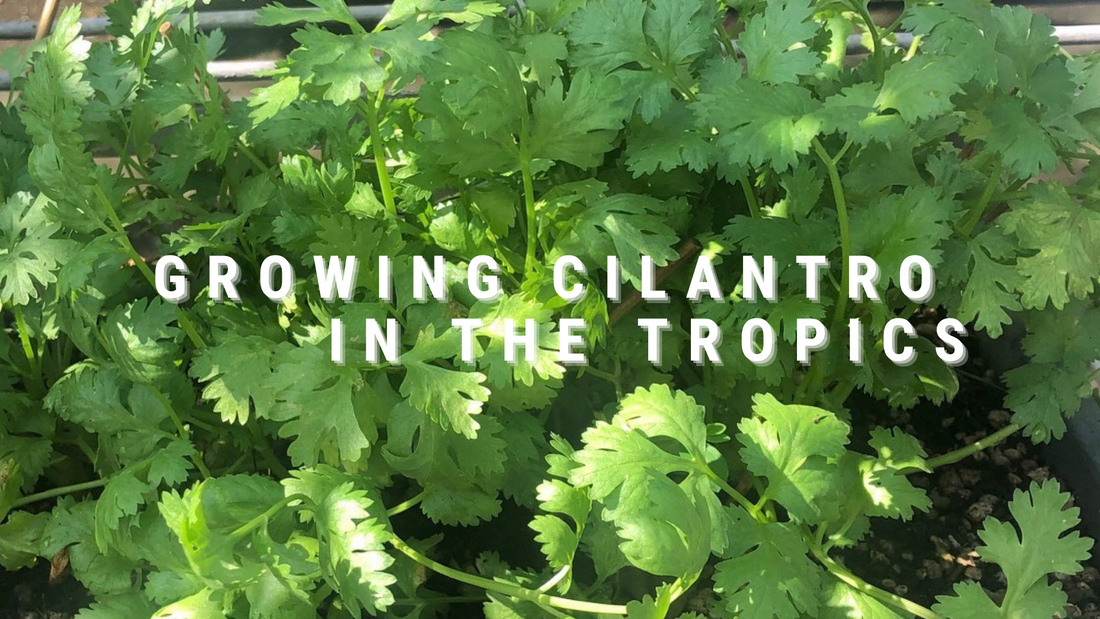
How to Grow Cilantro in the Warm Tropics
Share
Cilantro is a savory aromatic herb that is commonly used to spice up a lot of Asian or Mexican-inspired dishes. We use chopped cilantro herbs for sauteed vegetables, Asian salads, steamed seafood and home-made tacos. Its seeds, known as coriander, can also be used for seasoning, and they are just as flavorful as the leaves. This herb is typically a cool weather crop that is normally grown in the midlands where the weather is cooler. In the Philippines, growing cilantro can be a bit of a challenge in most places. Here are some tips in growing cilantro in warm tropical environments.
Choose the right seeds
Generally, cilantro grows best in cool weather conditions. If the weather gets extremely hot, like in summer, seed germination rate tends to decline, while fully-grown plants are prone to bolting. Bolting means that it produces flowers and seeds, which signals the end of its life cycle. Fortunately, many local seed producers in the Philippines have developed slow-bolting cultivars that adapt well in our warm weather here. In growing cilantro therefore, it is important to source the seeds from reputable growers or seed producers who have tested and developed seed varieties that are suitable for local growing conditions.
Start from Seeds
For greater chances of success, it is better to start from seeds rather than buy a seedling from a garden store. This is because the cilantro is very sensitive to changes in its environment. Typically, garden-bought seedlings were started in more controlled environments, like in a greenhouse-type of setting, These seedlings may find it difficult to thrive when suddenly exposed to harsher conditions outside.
To start from seeds, sow the seeds directly into a medium sized container. Place the container where it is exposed to limited morning sunlight. In about 10 days, the seeds will start to germinate. To prevent seedling shock, allow the seedlings to harden by gradually exposing them to outside elements.
Like most leafy herbs, cilantro does not occupy too much space and is therefore ideal for container gardening. A medium-sized pot of around 6 – 8 inches in depth and diameter is sufficient to grow cilantro plants. Do not overcrowd the pot. Thin out the weaker seedlings and allow some 2 inches of gap in between each plant.
Keep soil moist

About three weeks after the seeds have germinated, fertilize the soil by mixing in some organic compost material into the soil. Ensure that the soil is always moist (not soggy), and water the plants regularly. When using pots, check that excess water drains out of the pot properly. If available, use rice hull or any organic mulch to slow down water evaporation, especially during summer.
Provide dappled shade
Cilantro needs only a few hours of sun in the morning. To keep soil temperature low, provide dappled shade by strategically locating the pot beside other taller plants that can serve as a natural shield from the hot afternoon sun. During summer, move the pot to a shady part of the garden that still gets a lot of indirect sunlight.
How to harvest

To ensure a regular harvest, sow the seeds in batches. Under the right weather and soil conditions, the plants will be ready for harvest in about 8 weeks. To harvest, cut mature leafy stems starting with the outermost ones. For continued harvests, do not cut more than 50% of the stems per round.
Cilantro is an annual, which means it will not live longer than one year. After a few harvests, some will likely bolt or produce flowers (or simply wither or dry out completely). You can harvest coriander seeds for consumption or for the next growing cycle.

2 comments
“About three weeks after the seeds have germinated, fertilize the soil by mixing in some organic compost material into the soil.”
how do i do this? how do i mix in some organic compost?
—- do i uproot the plants then mix in the organic compost before replanting them? or do i just sprinkle some organic compost in top of the surface?
thank you for the clarification. i have some 10-day-old sprouts right now and would appreciate the tip and info.
The adapted deeds you mentioned for the Phillipines, where could i obtain them. And, what is the brand?